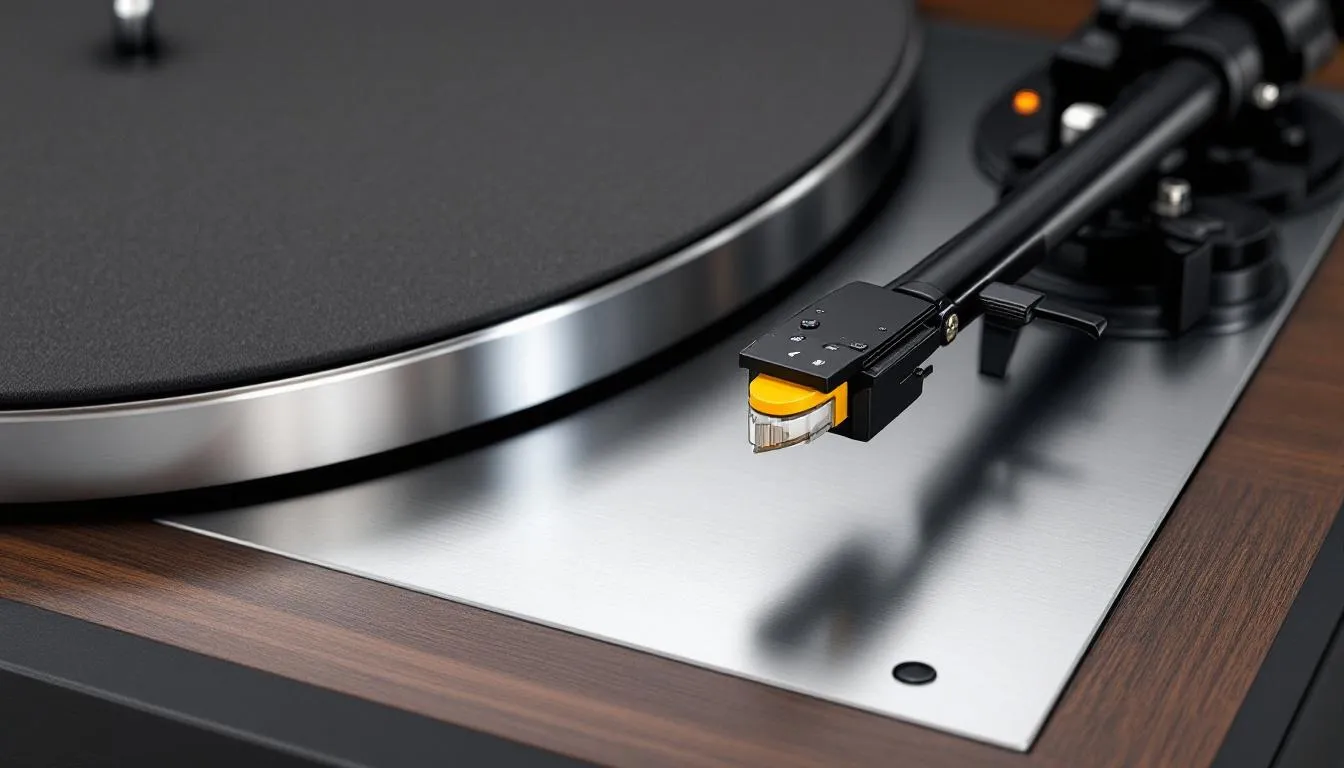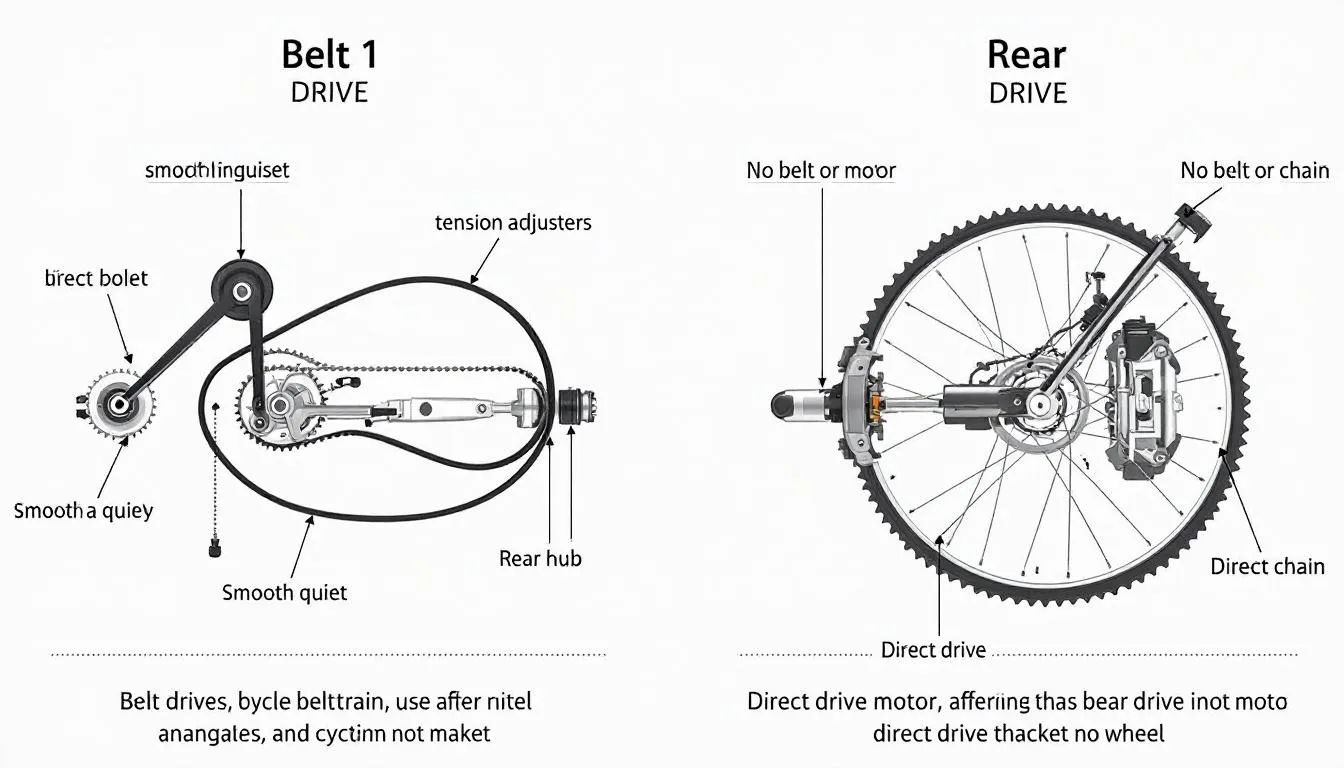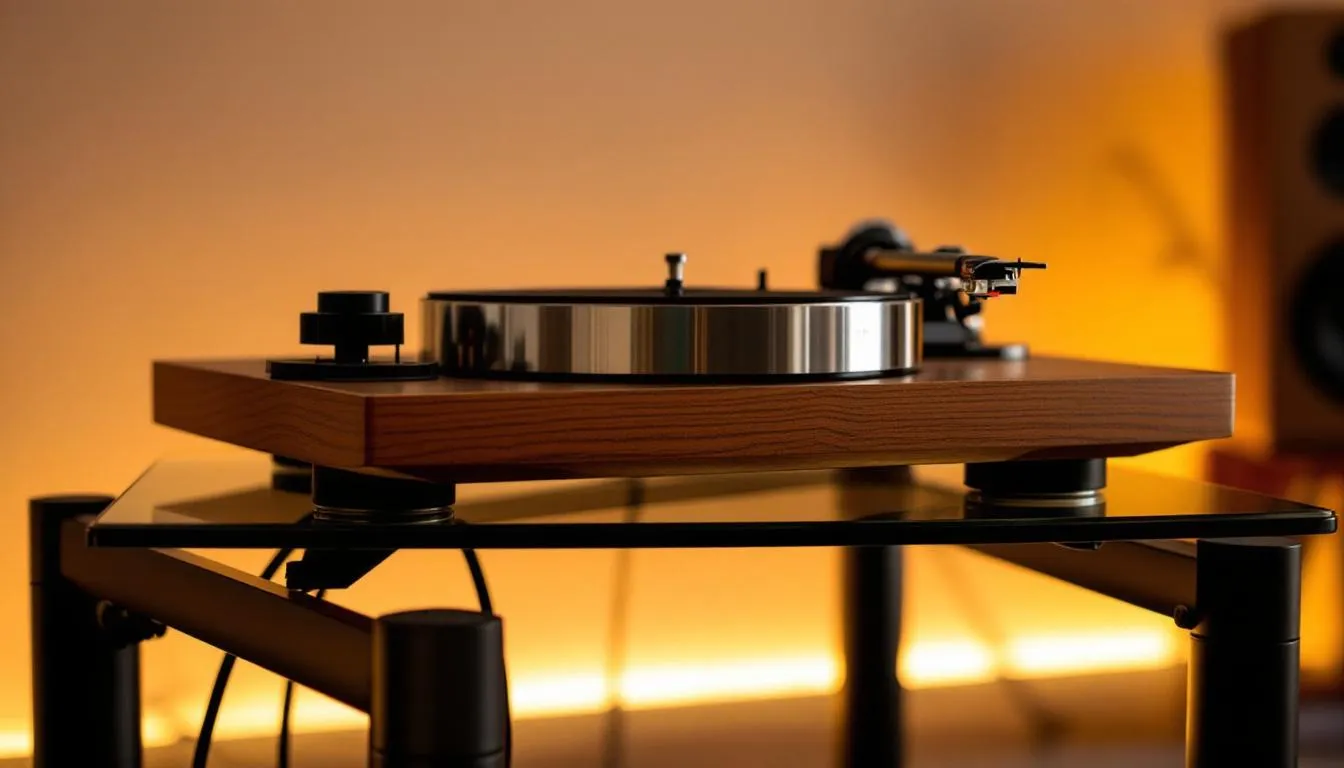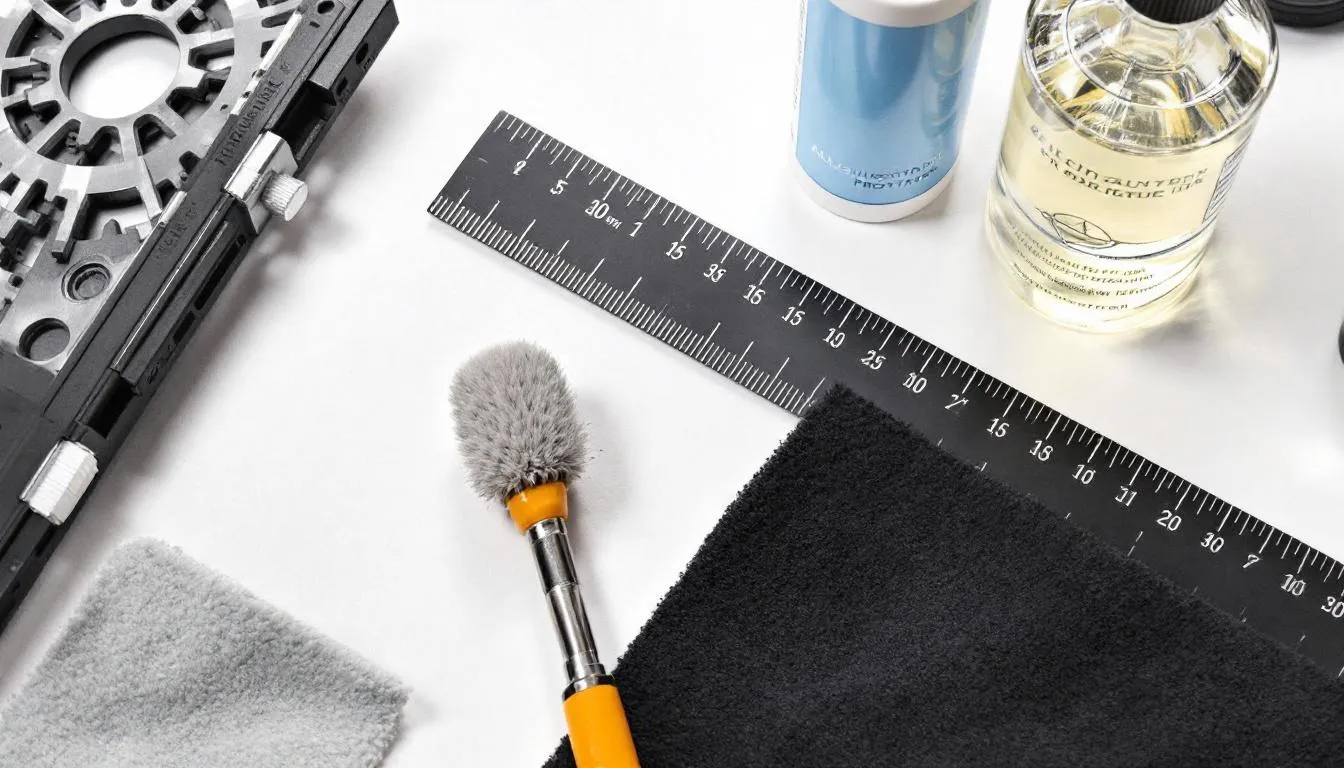Turntable Deck: Complete Guide to Choosing the Perfect Record Player
The vinyl revival has transformed turntable decks and vintage record players from nostalgic relics into essential audio components for music lovers worldwide, including the introduction of bluetooth turntables . With vinyl records outselling digital files in many markets, choosing the right turntable deck has become crucial for anyone serious about their vinyl collection. Whether you’re a vinyl purist seeking pristine sound quality or a DJ looking for robust performance features, understanding the intricacies of turntable deck technology will help you make an informed decision that enhances your music listening experience for years to come.
This comprehensive guide covers everything from the fundamental differences between belt drive and direct drive systems to specific product recommendations across every price range, helping you make the best choice . You’ll discover the essential components that affect sound quality, learn how to match a turntable deck to your listening style, and avoid common buying mistakes that could compromise your vinyl playback experience.
What is a Turntable Deck?
A turntable deck refers to the complete record playing system that converts the physical grooves on vinyl records into audio signals. Unlike traditional record players that include built-in speakers, a turntable deck typically requires connection to a separate amplifier and speakers for sound reproduction. This modular approach allows audiophiles and music enthusiasts to build customised audio systems that match their specific performance requirements and budget.
The turntable deck serves as the foundation of any serious analogue vinyl listening setup. Its primary function involves precisely tracking the stylus through record grooves while maintaining consistent rotational speed and minimal vibrations. The quality of these mechanical processes directly impacts the audio signal sent to your amplifier, making the choice of turntable deck one of the most critical decisions in building a high-quality audio system.
Modern turntable decks range from entry-level models designed for casual listening to professional-grade units capable of withstanding the demanding requirements of DJ performance. The distinction between different types lies primarily in their drive systems, build quality, and feature sets. Understanding these differences helps ensure you select the right turntable for your specific needs and listening environment.

Types of Turntable Decks
Belt Drive Turntable Decks
Belt drive turntables position the motor away from the platter, using a rubber belt to transfer rotational energy. This design significantly reduces motor vibrations that could interfere with sound quality, making belt drive systems particularly popular among audiophiles who prioritize clean audio reproduction. The belt acts as a natural vibration filter, isolating the sensitive platter and tonearm assembly from potentially disruptive motor noise.
Popular belt drive models include the Audio-Technica AT-LP120XUSB, which combines traditional belt drive benefits with modern features like USB recording capabilities. The Rega Planar 3 represents the high-end of belt drive technology, featuring precision engineering and minimal resonance construction. Pro-Ject’s Debut Carbon EVO offers an excellent mid-range option with a carbon fiber tonearm that enhances tracking precision while reducing unwanted resonances.
Belt drive turntables excel in home listening environments where sound quality takes precedence over operational convenience. However, they typically have slower startup times compared to direct drive models, making them less suitable for DJ applications requiring instant cueing and scratching techniques. The belt itself requires periodic replacement, usually every two to three years depending on usage patterns.
Direct Drive Turntable Decks
Direct drive turntables feature motors directly connected beneath the platter, providing immediate torque and consistent speed stability. This design eliminates the potential for belt slippage while offering the high torque necessary for professional DJ applications. The instant start capability and resistance to stylus drag make direct drive the preferred choice for club environments and radio broadcasting.
The legendary Technics decks, particularly the SL-1200 series, established direct drive as the professional standard for DJs worldwide. Modern iterations like the Technics SL-1200MK7 continue this tradition with updated features including reverse play and enhanced torque specifications. Pioneer DJ’s PLX series and Audio-Technica’s professional range offer alternative direct drive options that compete with the Technics legacy.
Direct drive technology provides superior speed consistency under varying loads, making it ideal for scratching and other demanding DJ techniques. The motor’s direct connection to the platter eliminates energy loss through belt systems, resulting in more precise speed control. However, lower-quality direct drive implementations may transmit motor vibrations to the platter, potentially affecting sound quality in critical listening applications.

Essential Components of a Turntable Deck
Platter and Motor System
The platter serves as the foundation for record support and rotational stability. Heavy platters provide better speed consistency by storing kinetic energy that resists speed variations caused by stylus drag or external vibrations. Materials commonly used include aluminum for its excellent damping properties, acrylic for its vibration-absorbing characteristics, and steel for maximum mass and durability.
Motor quality determines the turntable’s speed accuracy and noise performance. High-end turntables often feature coreless motors that eliminate the cogging effects associated with traditional iron-core designs. These precision motors maintain speeds within 0.002% accuracy, ensuring faithful reproduction of the original recording’s pitch and timing. The motor’s mounting system must effectively isolate vibrations while providing consistent rotational force.
Torque specifications become crucial for DJ applications, where the motor must overcome stylus drag and maintain speed during scratching. Professional dj turntables typically provide starting torque between 1.5 and 4.5 kgf·cm, with higher values enabling more aggressive mixing techniques. The spindle assembly requires precise manufacturing tolerances to ensure wobble-free rotation and minimize wow and flutter in the audio signal.
Tonearm and Cartridge Assembly
The tonearm tracks the stylus across the record surface while maintaining proper contact pressure and tracking angle. Quality tonearm design minimizes resonances that could color the sound while providing smooth, friction-free movement across the record’s entire surface. The effective mass of the tonearm must match the compliance characteristics of the chosen cartridge for optimal performance.
Tracking weight adjustment allows fine-tuning of the stylus pressure to match cartridge specifications and record conditions. Too little tracking weight causes poor groove contact and distortion, while excessive weight accelerates record wear and stylus deterioration. Anti-skating mechanisms counteract the inward force created by the offset tonearm geometry, ensuring even stylus contact across both groove walls.
Cartridge selection significantly impacts sound quality and tracking performance. Moving magnet cartridges offer easy stylus replacement and lower cost, while moving coil designs provide superior detail retrieval at higher prices. Popular options include the Ortofon 2M Red for its excellent tracking and warm sound signature, and the Audio-Technica VM95E series for versatile performance across multiple music genres.
Best Turntable Decks by Category
Best Entry-Level Turntable Decks Under £300
The Audio-Technica AT-LP60X represents exceptional value for newcomers to vinyl, featuring fully automatic operation and a built-in phono preamp for easy connection to powered speakers or amplifiers. Its belt drive design minimizes motor noise, while the integrated dual magnet cartridge provides respectable sound quality for the price range. The automatic tonearm operation eliminates guesswork for beginners while protecting both stylus and records from user error.
Sony’s PS-LX310BT introduces bluetooth turntable functionality to the entry-level market, allowing wireless transmission to compatible speakers while maintaining traditional wired outputs. The inclusion of USB output enables easy digitization of vinyl records to computer files, making it ideal for users wanting to preserve their vinyl collection digitally. Build quality exceeds expectations for the price point, with a solid plinth that minimizes vibrations.
Pro-Ject’s Primary E offers manual operation for users seeking hands-on control over their listening experience. The quality Ortofon OM5E cartridge provides detailed sound reproduction that rivals many models costing significantly more. The minimalist design focuses on essential components without unnecessary features, resulting in better sound quality per dollar spent compared to feature-laden alternatives.
Best Mid-Range Turntable Decks £300-£800
The Rega Planar 1 Plus has earned industry recognition for its exceptional build quality and musical performance. Hand-assembled in the UK, it features the precision RB110 tonearm and Rega Carbon cartridge, delivering sound quality that competes with turntables costing considerably more. The rigid plinth construction and careful attention to vibration control result in low noise and excellent detail retrieval.
Pro-Ject’s Debut Carbon EVO represents the evolution of a classic design, incorporating a carbon fiber tonearm that provides optimal stiffness-to-weight ratio. The included Sumiko Rainier cartridge offers excellent tracking and dynamic range, while the TPE-damped steel platter minimizes resonances. The electronic speed change and optional acrylic platter upgrade provide room for future enhancement.
The Audio-Technica AT-LP120XUSB bridges the gap between audiophile and DJ requirements with its direct drive motor and comprehensive feature set, making it a great option for anyone looking for a new turntable . Variable pitch control enables DJ mixing techniques, while the high-quality AT-VM95E cartridge ensures excellent sound reproduction for home listening. USB connectivity facilitates easy record digitization, and the removable dust cover protects the mechanism when not in use.
Best High-End Turntable Decks Above £800
The Technics SL-1200GR represents the pinnacle of direct drive technology, featuring a coreless motor that eliminates cogging and provides exceptional speed stability. The heavy brass and aluminum platter stores significant kinetic energy, resisting speed variations while damping unwanted resonances. Professional-grade build quality ensures decades of reliable operation in demanding environments.
Rega’s Planar 3 with Elys2 cartridge continues the company’s tradition of precision engineering and musical performance. The hand-assembled construction and carefully selected materials result in low resonance and excellent detail retrieval. The RB330 tonearm provides exceptional tracking ability, while the optional power supply upgrade offers further performance improvements.
The Pro-Ject X2 B combines German engineering with audiophile-focused design elements. Its heavy aluminum platter and Pro-Ject 9cc Evolution tonearm deliver reference-level performance for critical listening applications. The decoupled motor mount eliminates vibration transmission, while premium components throughout the signal path ensure pristine audio reproduction.

Key Features to Consider
Built-in Phono Preamp
A built-in phono preamp provides convenience by eliminating the need for a separate phono stage, allowing direct connection to line-level inputs on amplifiers or powered speakers. The RIAA equalization curve corrects the intentional frequency adjustments made during record mastering, restoring flat frequency response for accurate playback. Quality varies significantly between models, with better implementations rivaling dedicated external units.
Switchable phono/line outputs offer flexibility for users who may upgrade to external preamps later. This feature allows comparison between internal and external phono stages, helping users determine if upgrading would provide worthwhile improvements. Many vinyl purists prefer external phono preamps for their superior noise performance and adjustability for different cartridge types.
The convenience of built-in preamps makes turntables more accessible to newcomers who may not understand the complexities of phono-level signals. However, serious listeners often benefit from dedicated phono stages that offer superior performance and customization options for specific cartridge characteristics.
Speed Options and Pitch Control
Standard playback speeds of 33⅓ RPM for full albums and 45 RPM for singles accommodate the vast majority of modern vinyl records. Some turntables include 78 RPM capability for vintage shellac recordings, though this requires specialized styli designed for the wider grooves of pre-1960s records. Electronic speed switching provides precise control and maintains settings between listening sessions.
Pitch control features enable fine-tuning of playback speed for musical purposes or DJ mixing applications. Typical adjustment ranges span ±8% to ±16%, allowing tempo matching between records or correction of slightly off-speed pressings. Quartz-locked speed control maintains accuracy within 0.002% deviation, ensuring faithful reproduction of the original recording’s musical content.
Variable pitch control becomes essential for DJs who need to match tempos between tracks for seamless mixing. The precision and range of pitch adjustment often determines a turntable’s suitability for professional applications. Many modern DJ decks feature digital displays showing exact speed percentages for precise tempo matching.
Connectivity Options
USB output functionality enables direct digitization of vinyl records to computer files, providing a bridge between analog and digital music formats. Quality varies between implementations, with better systems featuring high-resolution analog-to-digital conversion that preserves the character of vinyl playback. This feature proves particularly valuable for preserving rare or out-of-print records.
USB connectivity typically includes software for recording and editing digital files created from vinyl sources. The ability to remove pops and clicks while preserving the warmth of analog reproduction appeals to users building digital libraries from their vinyl collection. Connection procedures vary between manufacturers, with some offering plug-and-play compatibility while others require driver installation.
Bluetooth transmission allows wireless streaming to compatible speakers, though this convenience comes at the cost of audio quality due to compression. The appeal lies in eliminating cable connections and enabling playback through modern wireless speaker systems. However, serious listeners typically prefer wired connections for their superior fidelity and reliability.

How to Choose the Right Turntable Deck
Budget Allocation Guidelines
Industry experts recommend allocating 20-25% of your total audio system budget to the turntable deck, recognizing its fundamental role in determining overall sound quality. This proportion ensures balanced performance across all system components while preventing bottlenecks that could limit musical enjoyment. Consider additional costs for cartridge upgrades, phono preamps, and necessary accessories when planning your budget.
Factor in long-term upgrade potential versus immediate feature requirements when selecting a turntable. Some models offer modular design that accommodates future improvements like better cartridges, external power supplies, or upgraded plinths. This approach allows gradual system enhancement as budget permits, maximizing long-term value and musical satisfaction.
The relationship between turntable quality and remaining system components requires careful consideration. An excellent turntable connected to poor speakers will not reach its potential, while an inferior turntable can limit even the finest amplifiers and speakers. Balanced allocation ensures each component can fully contribute to the overall musical experience.
Matching to Your Listening Style
Casual listening prioritizes ease of use and built-in features that minimize setup complexity. Fully automatic operation, built-in phono preamps, and simple speed selection appeal to users who want to enjoy their vinyl records without technical complications. These features reduce the learning curve while providing satisfactory performance for recreational listening.
Audiophiles focus on build quality, vibration isolation, and upgrade potential when selecting turntables. Manual operation provides greater control over playback, while modular design allows component upgrades as experience and budget grow. The ability to customize cartridges, upgrade tonearms, and add isolation accessories appeals to listeners seeking maximum performance from their vinyl collection.
DJ applications require direct drive motors, high torque specifications, and comprehensive pitch control capabilities. Professional DJs need turntables that can withstand the mechanical stress of scratching and cueing, complemented by effective dj software, while maintaining consistent performance night after night. Features like reverse play, instant start, and precise speed adjustment become essential for professional mixing applications.
Setup and Maintenance
Initial Setup Process
Proper isolation forms the foundation of quality turntable performance, requiring placement on dedicated stands or isolation feet that minimize external vibrations. The turntable’s built-in level indicator helps achieve proper horizontal alignment, ensuring consistent tracking force and optimal stylus contact with record grooves. Careful attention to isolation prevents acoustic feedback that can degrade sound quality and damage speakers.
Tonearm adjustment requires precise setting of tracking force, anti-skating, and cartridge alignment for optimal performance. The manufacturer’s specifications provide starting points, but fine-tuning based on listening tests often yields the best results. Proper cartridge alignment ensures the stylus maintains correct tangency to groove walls, minimizing distortion and record wear.
Phono cable connection and proper grounding prevent hum and interference that can compromise sound quality. The ground wire connection to your amplifier or phono preamp eliminates potential noise sources, while careful cable routing prevents interference from power supplies or digital equipment. Quality interconnect cables can further enhance signal integrity between turntable and amplifier.
Ongoing Maintenance Requirements
Regular stylus cleaning maintains optimal tracking and prevents buildup of dust and debris that can damage records. Specialized cleaning brushes and solutions remove accumulated material without harming the delicate diamond tip. Proper cleaning technique involves gentle front-to-back motion following the stylus direction to avoid damage.
Belt replacement becomes necessary every two to three years for belt drive turntables, depending on usage patterns and environmental conditions. Stretched or deteriorated belts cause speed instability and reduced torque transmission. Original manufacturer belts typically provide better performance than generic replacements due to precise specifications for each model.
Periodic cartridge alignment verification ensures continued optimal performance as components settle over time. The stylus itself requires replacement based on playing time, typically after 800-1200 hours of use for standard styli. Tracking elliptical or fine-line styli may last longer but cost more to replace. Proper tracking force prevents premature wear while ensuring adequate groove contact.

Common Buying Mistakes to Avoid
Many newcomers select suitcase-style record players based on appearance and portability without understanding their limitations. These units typically lack proper tracking force adjustment, use ceramic cartridges that accelerate record wear, and provide poor sound quality compared to dedicated turntable decks. The integrated speakers often cause acoustic feedback that further degrades performance.
Overlooking cartridge and stylus quality represents another common error that compromises the entire system’s performance, leading to poor sound when attempting to rip records . A high-quality turntable with a poor cartridge cannot deliver its potential, while proper cartridge selection can transform even modest turntables. The stylus condition directly affects both sound quality and record preservation, making regular inspection and replacement essential.
Inadequate consideration of room acoustics and turntable placement often limits even expensive systems. Proper isolation, distance from speakers, and vibration control significantly impact performance regardless of the turntable’s price. The listening environment plays a crucial role in determining whether your investment achieves its musical potential.
Buying based solely on appearance rather than technical specifications frequently leads to disappointing results. Visual appeal doesn’t correlate with sound quality or build precision. Similarly, underestimating the cost of necessary accessories like proper stands, quality cables, and isolation products can strain budgets and delay optimal system performance.
The expectation that expensive automatically means better suited to your needs represents another pitfall. A professional DJ deck may cost more than an audiophile turntable but provide worse sound quality for home listening. Understanding your specific requirements prevents costly mismatches between equipment capabilities and actual usage patterns.
Conclusion
Selecting the perfect turntable deck requires balancing technical performance, feature requirements, and budget constraints with your specific listening goals. Whether you’re drawn to the convenience of automatic operation, the precision of high-end audiophile components, or the robust performance demanded by professional DJs, understanding the fundamental differences between drive systems, build quality, and feature sets ensures an informed purchasing decision.
The vinyl revival continues to drive innovation in turntable design, with manufacturers introducing new models that blend traditional analog performance with modern convenience features. From entry-level belt drive models with USB recording to professional direct drive decks capable of withstanding demanding club environments, today’s turntable market offers options for every application and budget.
Remember that the turntable deck represents just one component in your complete audio system. Proper setup, quality accessories, and ongoing maintenance prove just as important as the initial purchase decision in achieving satisfying long-term performance. Start your vinyl journey with confidence by applying these guidelines to find the turntable deck that will bring decades of musical enjoyment to your home or professional environment.
